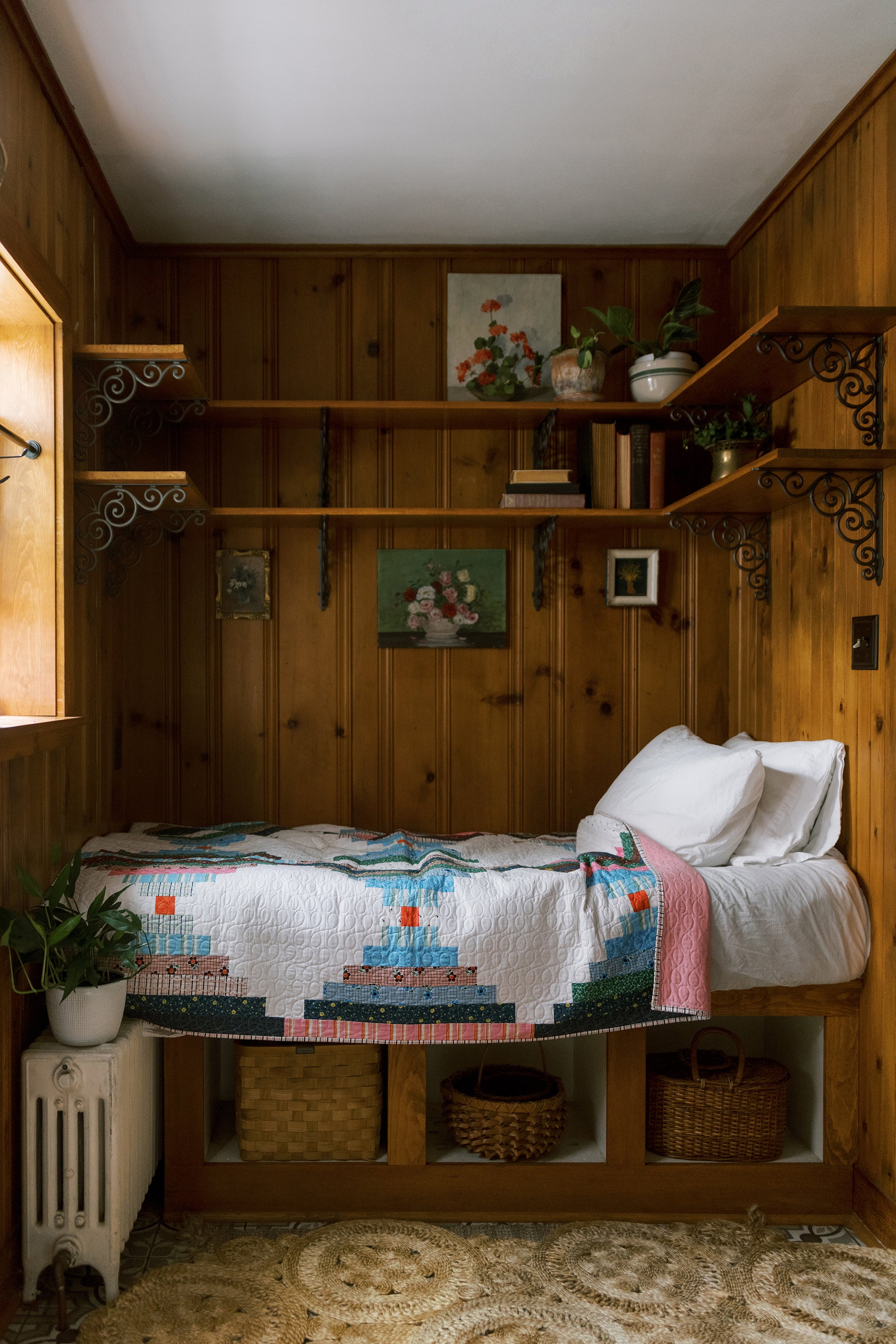
Quilt Care
The care instructions that follow pertain primarily to the finished quilts I sell, but I recommend using this same guidance for the treasured quilts you make.
Labeling
My made-to-order quilts include a woven or printed label, my signature and the date of completion. I also include the initials of anyone who’s worked on the quilt with me.
If you make your own quilt, it’s important to document your efforts! A hand made quilt label is a fitting and personal final touch for your quilt, especially if you’re giving your quilt as a gift. You can use a fine-point permanent marker to sign your name, date, and any other identifying information on a small piece of fabric or ribbon and attach it to the back of the quilt. If a quilt is given to commemorate a special event, such as a birth or wedding, include the recipient’s name and the town where they live. You can also make a stamp with your name or initials, embroider a design, or have a woven label made.
The Quilt Alliance has great information about the importance of documenting your quilt, and instructions on making your own labels.
Cleaning
The first step in keeping your quilt clean is to gently shake dirt and dust off occasionally. Use your vacuum with a brush attachment on low suction – this is a great way to regularly remove pet hair and surface dust or dirt.
Wash your quilt in cold water by hand in a large sink or tub, or in your washing machine on a gentle cycle. I recommend using a gentle soap like our Scentless Soak Wash. Use a color-catcher in the wash if in doubt about color fastness.
Fibers are most vulnerable when wet, so carefully lift the wet quilt from washer, and carry in a sheet to avoid stretching and weakening fibers. Place in the dryer on air for 15-20 minutes to remove some moisture, then dry flat. Do not wring or hang wet quilts.
Washing will soften a quilt and accentuate the texture of the quilting. Dry cleaning for cotton quilts is not recommended, but quilts made with fabrics other than cotton should be dry cleaned for best results.
Use & Storage
I design and make my quilts to be used as bed coverings. Handle your quilts with care as you would any fine textile, avoid direct sun to keep colors from fading, but above all else – enjoy them!
To remove fold lines or wrinkles from shipping, steam with an iron or spritz lightly with water and allow to dry flat. If you plan on storing your quilt, use an acid-free box or tissue, or wrap the quilt in unbleached muslin – do not store in a plastic bag or bin. Choose a dry location with a stable temperature. To prevent permanent creases which can weaken the fibers, refold the quilt occasionally, or try rolling it if you have the room to store it.
Hanging
If you wish to display your quilt, you can fold it over a vintage drying rack, or hang it with commercially available quilt hangers. My preferred method uses inexpensive materials and is relatively simple to construct. I like it because it’s invisible from the front (allowing the quilt to shine) and slightly “floats” the quilt away from the wall.
